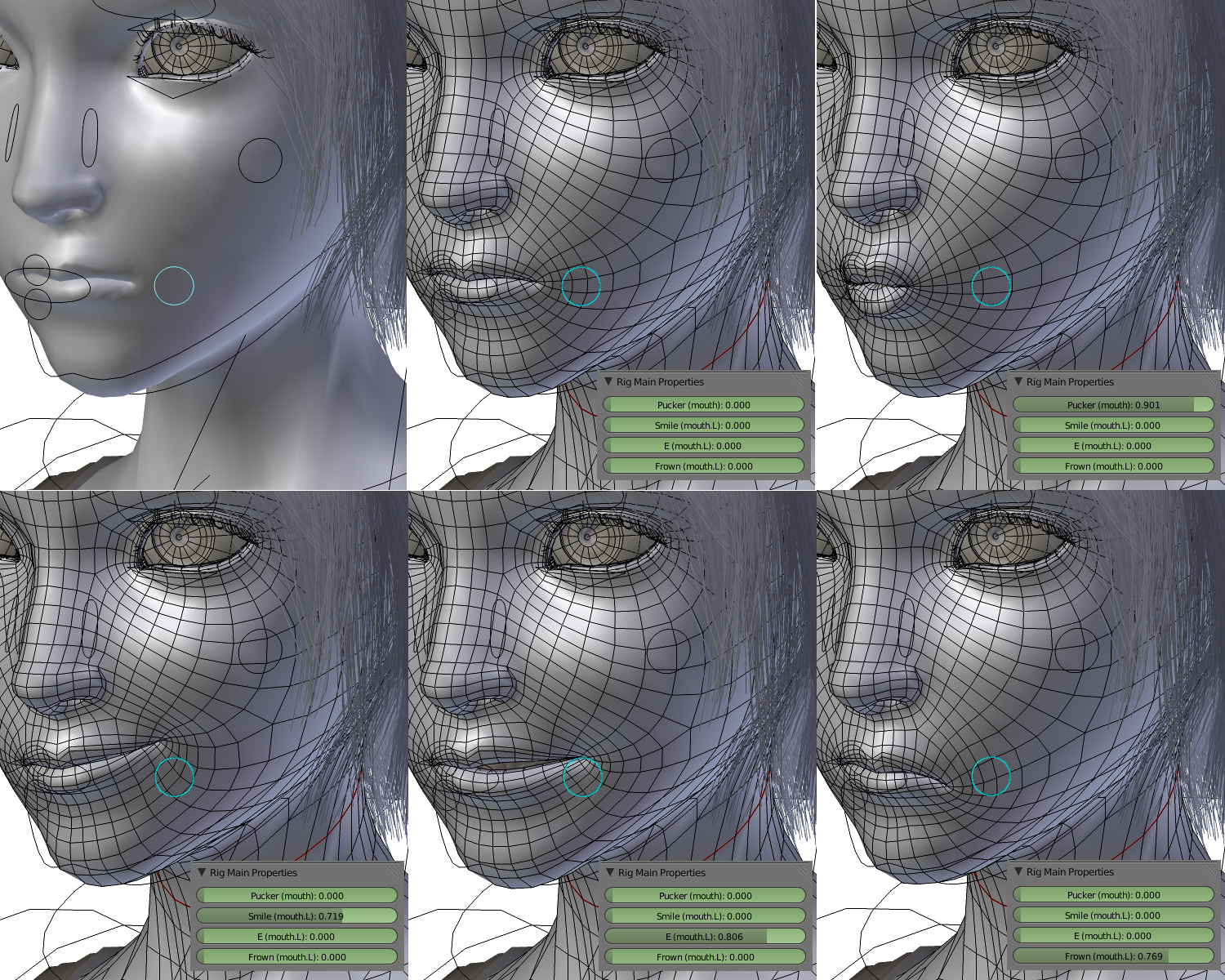Per-vertex Animation on:
[Wikipedia]
[Google]
[Amazon]
 Morph target animation, per-vertex animation, shape interpolation, shape keys, or blend shapes is a method of 3D
Morph target animation, per-vertex animation, shape interpolation, shape keys, or blend shapes is a method of 3D
 Morph target animation, per-vertex animation, shape interpolation, shape keys, or blend shapes is a method of 3D
Morph target animation, per-vertex animation, shape interpolation, shape keys, or blend shapes is a method of 3D computer animation
Computer animation is the process used for digitally generating animations. The more general term computer-generated imagery (CGI) encompasses both static scenes (still images) and dynamic images (moving images), while computer animation refe ...
used together with techniques such as skeletal animation. In a morph target animation, a "deformed" version of a mesh is stored as a series of vertex positions. In each key frame
In animation and filmmaking, a key frame (or keyframe) is a drawing or shot that defines the starting and ending points of a smooth transition. These are called ''frames'' because their position in time is measured in frames on a strip of film ...
of an animation, the vertices are then interpolated between these stored positions.
Technique
The "morph target" is a deformed version of a shape. When applied to a human face, for example, the head is first modelled with a neutral expression and a "target deformation" is then created for each other expression. When the face is being animated, the animator can then smoothly morph (or "blend") between the base shape and one or several morph targets. Typical examples of morph targets used in facial animation is a smiling mouth, a closed eye, and a raised eyebrow, but the technique can also be used to morph between, for example, Dr Jekyll and Mr Hyde. Early 3D videogames, such as Quake and Crash Bandicoot use per-vertex animation for all character animations. When used for facial animation, these morph target are often referred to as "key poses". Theinterpolation
In the mathematical field of numerical analysis, interpolation is a type of estimation, a method of constructing (finding) new data points based on the range of a discrete set of known data points.
In engineering and science, one often has a n ...
s between key poses when an animation is being rendered, are typically small and simple transformations of movement, rotation, and scale performed by the 3D software.
Not all morph target animation has to be done by actually editing vertex positions. It is also possible to take vertex positions found in skeletal animation and then use those rendered as morph target animation.
An animation composed in one 3D application suite sometimes needs to be transferred to another, as for rendering. Because different 3D applications tend to implement bones and other special effects differently, the morph target technique is sometimes used to transfer animations between 3D applications to avoid export issues.
Benefits and drawbacks
There are advantages to using morph target animation over skeletal animation. The artist has more control over the movements because they can define the individual positions of the vertices within a keyframe, rather than being constrained by skeletons. This can be useful for animating cloth, skin, and facial expressions because it can be difficult to conform those things to the bones that are required for skeletal animation. However, there are also disadvantages. Vertex animation is usually a lot more labour-intensive than skeletal animation because every vertex position must be manually manipulated and, for this reason, the number of pre-made target morphs is typically limited. Also, in methods of rendering where vertices move from position to position during in-between frames, a distortion is created that does not happen when using skeletal animation. This is described by critics of the technique as looking "shaky". On the other hand, this distortion may be part of the desired "look". For large models, vertex animation requires significant memory and storage as the position of each modified vertex must be stored for each frame. In contrast, skeletal animation requires only the storage of bone transformations for each frame.See also
*Morphing
Morphing is a special effect in motion pictures and animations that changes (or morphs) one image or shape into another through a seamless transition. Traditionally such a depiction would be achieved through dissolving techniques on film. Sinc ...
* Skeletal animation
Skeletal animation or rigging is a technique in computer animation in which a character (or other articulated object) is represented in two parts: a surface representation used to draw the character (called the '' mesh'' or ''skin'') and a hierar ...
* Machinima
Machinima, originally machinema () is the use of real-time computer graphics engines to create a cinematic production. Most often, video games are used to generate the computer animation. The word "machinima" is a portmanteau of the words '' ...
* 3D computer graphics
3D computer graphics, or “3D graphics,” sometimes called CGI, 3D-CGI or three-dimensional computer graphics are graphics that use a three-dimensional representation of geometric data (often Cartesian) that is stored in the computer for t ...
References
{{Animation 3D computer graphics 3D imaging Visual effects 3D graphics software Computer graphic techniques Animation techniques Computer animation